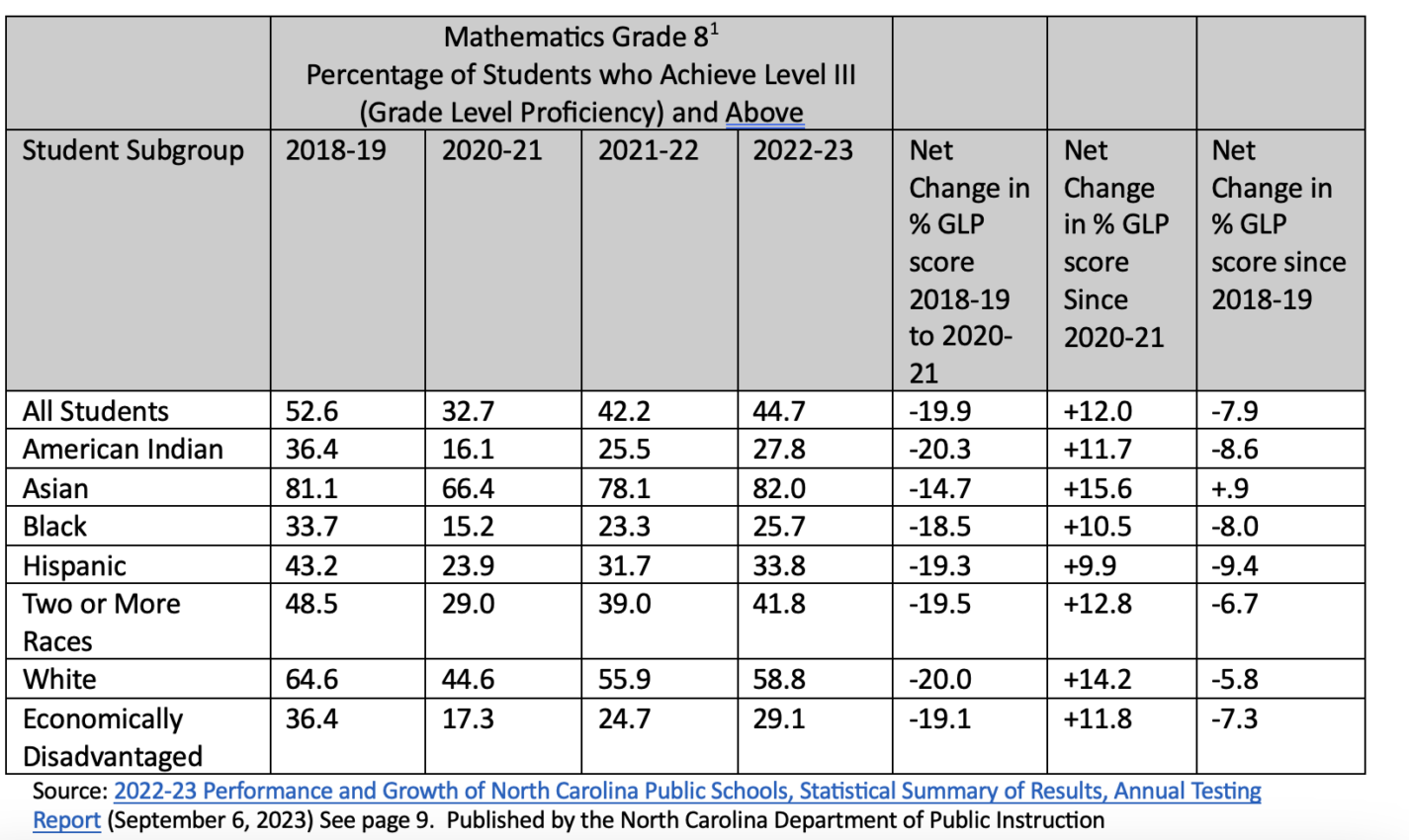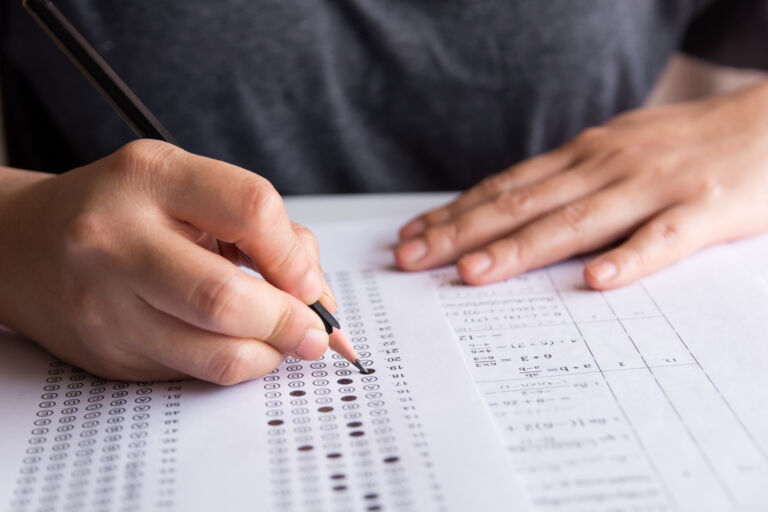Student performance in eighth grade math can often be a predictor of problems or promise for North Carolina students. Since the pandemic, math performance has taken on even greater importance since school closures, pivoting to virtual instruction, and the emergence of learning loss.
In eighth grade, students participate in either the End-of-Grade tests or NC Math 1. Recent test results from North Carolina Department of Public Instruction reflect what percentage of students who achieved Grade Level Performance (GLP) and above on End-of-Grade state tests.
So how are North Carolina eighth graders doing in math? The question is especially relevant considering not only the pandemic but also the $6 billion in federal Covid relief North Carolina has received to help those impacted by the pandemic.
The chart below breaks down the percentage of students by group of those who achieve Level III (Grade Level Proficiency) and above (Level IV and Level V). The last three columns chart the impact of Covid pandemic and policies on math performance. The last two columns, reflect improvement since 2020-21 as well as the net change (plus or minus), since 2018-19, the last year before Covid.
As noted, the performance of all students in math dropped significantly – almost 20 points between 2018-19 and 2020-21. Since then, performance has improved, but the percentage of all students scoring at Grade Level Proficiency remains almost 8 percentage points behind pre-Covid levels.
Two other facts stand out. First, all subgroups but one – Asians – remain below 2018-19 proficiency levels. Asian students have increased the percentage achieving Grade Level Proficiency by 0.9 of one percent. It’s not a large increase, but an increase nonetheless, and at a time when all other subgroups remain below pre-Covid levels.
Second, the subgroups with the highest differentials in the percentage of students scoring Level III, IV or V, pre- and post-pandemic scores remain minorities. Hispanics have the largest differential at -9.4, followed by American Indian (-8.6) and black (-8.0). It’s important to note minority subgroups have boosted scores in recent years. While scores have improved, they remain below pre-pandemic levels. Equally important, even with improvements, proficiency scores remain at unacceptably low levels.
Only one in four students is testing at Grade Level Proficiency or better. For Hispanics it’s about one in every three students. Would Detroit automobile executives survive if three of every four cars failed inspection? The public would demand change. I don’t understand why we fail to hold schools to the same level of accountability.
According to the North Carolina Department of Public Instruction, North Carolina public schools have spent $5.2 billion of the $6.2 billion allocated to the state for Covid relief. Over $1 billion remains unspent. The legislation which authorized the funding required states to set aside at least 20 percent of funds to help address learning loss.
So, what have we learned? Yes, scores have improved. However, scores still are not anywhere near where parents or policymakers want them to be. Favorable trendlines don’t hide the fact that scores are low and even lower for minorities. Billions in federal funding has failed to change that and continue to raise yet more questions about the use of federal Covid relief dollars and their efficacy.

[1] Eighth Graders participate in either Grade 8 End-of-Grade test or NC Math 1.


